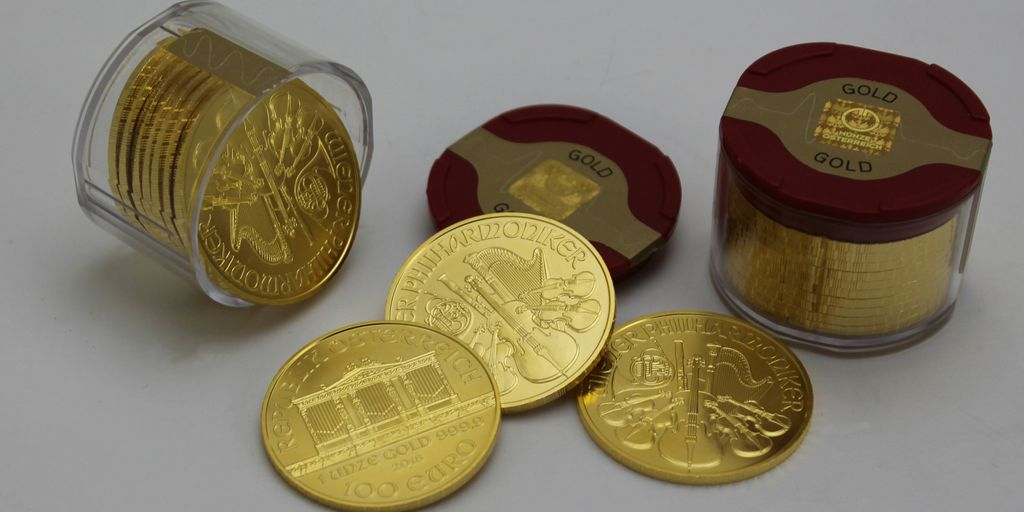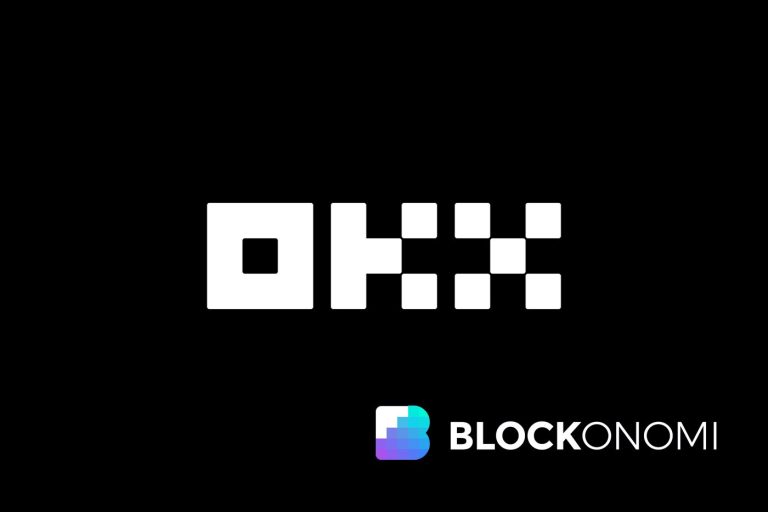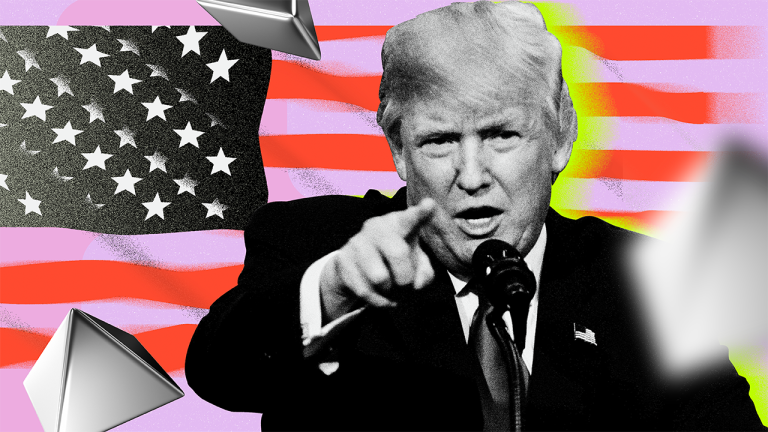
Gold is a go-to asset for many investors because it tends to hold its value and provide a hedge against inflation. As we look ahead to 2025, it’s important to keep an eye on the trends affecting gold prices. Factors like economic conditions, central bank policies, interest rates, and geopolitical events all play a role in shaping the gold market. This article will break down the key drivers behind gold price trends, share expert insights, and help investors make informed decisions about their gold investments.
Key Takeaways
- Gold prices are influenced by macroeconomic factors, including interest rates and inflation.
- Geopolitical tensions can drive demand for gold as a safe-haven asset.
- Central banks play a crucial role in the gold market by adjusting their reserves and purchasing more gold.
- Investor behavior, particularly in Asia, shows strong demand for gold jewelry despite high prices.
- Technological advancements and recycling trends can impact gold supply and demand dynamics.
Key Factors Influencing Gold Prices
Macroeconomic Influences
Okay, so macroeconomics? Huge deal for gold. If the economy tanks, people run to gold. Makes sense, right? It’s like everyone suddenly remembers gold is shiny and safe. But when things are booming, gold kinda takes a backseat to stocks and stuff. Keep an eye on those GDP reports and employment numbers; they’re like tea leaves for gold prices.
Geopolitical Risks
Geopolitics is a fancy word for
Gold Price Forecast for 2025
Short-Term Projections
Okay, so everyone’s asking where gold is headed this year. After that crazy spike past $3,000 per ounce, analysts are scrambling to update their forecasts. The general vibe is still bullish, but with a healthy dose of caution. A lot of experts are pointing to a potential consolidation phase after the initial surge.
Here’s a quick rundown of what some folks are saying:
- Some analysts see gold hitting $3,400 by the end of Q3, then maybe cooling off a bit.
- Others are more conservative, predicting a range between $3,200 and $3,350 for the rest of the year.
- A few wild cards are out there, suggesting a possible run to $3,500 if economic data keeps weakening.
Long-Term Predictions
Looking further out, the picture gets a bit murkier. Most forecasts for 2026 and beyond depend heavily on factors like inflation, interest rates, and geopolitical stability. The long-term gold projections are all over the place, honestly. Some analysts are saying gold could reach $4,000 by 2027, while others think it’ll hover around $3,600. It really depends on how the global economy shakes out.
Predicting gold prices years in advance is like trying to predict the weather a year from now. There are just too many variables at play. Keep an eye on the big picture, and don’t get too caught up in specific numbers.
Market Sentiment Analysis
Right now, market sentiment is pretty positive. There’s a lot of talk about gold being a safe-haven asset, especially with all the uncertainty in the world. Geopolitical risks, inflation worries, and concerns about a potential recession are all fueling demand for gold. But sentiment can change quickly. Keep an eye on news headlines and investor behavior. If people start feeling more optimistic about the economy, gold prices could take a hit. Also, watch what central banks are doing. Their gold trading guide and buying habits can have a big impact on the market.
Understanding Gold Market Trends
Current Market Volatility
The gold market in 2025? A rollercoaster. We saw a historic peak in April, hitting $3,500/oz, only to watch it drop to $3,338/oz the very same day. That’s volatility! What’s driving this? A mix of factors, including geopolitical tensions and central bank actions. It’s enough to make your head spin. Keep an eye on live gold prices to stay updated.
Investor Behavior
Investor behavior is all over the place. Some are running to gold as a safe haven, while others are more cautious, waiting to see what happens with interest rates. Retail demand in Asia, especially for jewelry, is holding steady. Western investors? They’re more sensitive to yields and economic data. It’s a mixed bag, making it tough to predict where things are headed. Here’s a quick look at investment strategies:
- Short-term trading: Capitalizing on daily price swings.
- Long-term investment: Holding gold as a store of value.
- Diversification: Spreading risk across different assets.
Central Bank Activities
Central banks are playing a big role. Countries like China and India are buying up gold to diversify their reserves. This is adding to the demand and helping to support prices. Keep an eye on central bank policies, as they can really shake things up. Fluctuations in gold price trends are often tied to these decisions.
Central bank purchases remain strong, with countries like China and India continuing to diversify reserves amid shifting global alliances. This trend is expected to continue, providing a floor for gold prices even if other factors turn negative.
Expert Insights on Gold Investments
Analyst Predictions
Analysts are all over the place, but most agree gold’s got staying power. Some are saying we’ll see prices around $3,000 per ounce, while others are way more bullish. It really depends on who you ask and what their crystal ball is telling them. J.P. Morgan Research is predicting that gold prices will increase, reaching approximately $3,000 per ounce by 2025, with an average price of $2,950 per ounce in the fourth quarter of that year. gold stocks performance analysis are important to consider.
Market Strategies
Having a plan is key. Don’t just jump in without knowing what you’re doing. Think about diversifying your portfolio and maybe even dollar-cost averaging. That way, you’re not putting all your eggs in one basket, and you’re smoothing out those price swings.
- Diversify, diversify, diversify. Seriously, can’t say it enough.
- Consider dollar-cost averaging. It’s like dipping your toes in instead of diving headfirst.
- Keep an eye on those market dips. They’re opportunities in disguise.
Gold is increasingly being viewed as a strategic portfolio allocation, not just a short-term hedge.
Demand Trends
Demand is a biggie. What are central banks doing? What about jewelry demand in places like India and China? These things can really move the needle. Plus, keep an eye on any new tech that might need gold – that could be a game-changer. The trading platform of ISA Bullion is a good place to start.
The Role of Gold in Economic Uncertainty
Safe-Haven Asset Appeal
When the stock market looks shaky or global events take a turn for the worse, people often flock to gold. It’s seen as a safe place to park money when everything else feels risky. Gold’s value doesn’t usually move in the same direction as stocks or bonds, which is why it’s considered a safe-haven asset. This is because gold has low correlation with other asset classes, so can act as insurance during falling markets and times of geopolitical stress.
Inflation Hedge
Worried about inflation eating away at your savings? Gold is often touted as a way to protect your wealth. The idea is that as the cost of goods and services goes up, so does the price of gold. Historically, gold has been regarded as a means of safeguarding capital against high inflation. But given gold’s diverse and fluid drivers of demand at the moment, the metal has recently served both as a debasement hedge.
Crisis Response
During times of crisis, like a financial meltdown or a major geopolitical event, gold tends to shine. People lose faith in traditional investments and look for something tangible and reliable. This increased demand can drive up gold prices. Gold’s limited deposits and mining difficulty make it a valuable asset, particularly during economic uncertainty. In periods of economic turbulence, the demand for gold rises as it offers a reliable hedge against inflation.
Gold looks well situated to hedge the elevated levels of uncertainty around the macro landscape as the Trump administration announces new executive policy initiatives over the coming weeks and months, including tariffs.
Gold Supply and Demand Dynamics
Mining Output Trends
So, what’s the deal with gold coming out of the ground? Well, mining output is a big piece of the puzzle. It’s not just about how much gold we can dig up, but also the cost of doing it. Think about it: if it costs more to mine than the gold is worth, miners aren’t going to be too keen on ramping up production. Plus, new discoveries are getting harder to come by, and existing mines are getting tapped out. It’s a whole thing.
- Production costs are rising.
- New discoveries are rare.
- Existing mines are depleting.
Jewelry Demand
Jewelry is a huge driver for gold demand, especially in places like India and China. When economies are doing well, people tend to buy more bling. But it’s not just about economic growth. Cultural factors play a big role too. For example, gold is often given as gifts during weddings and festivals, so demand can spike during those times. Also, changing fashion trends can influence how much gold is used in jewelry designs. It’s a complex market, for sure.
Jewelry demand is sensitive to economic conditions and cultural events. Keep an eye on these factors to understand market shifts.
Central Bank Purchases
Central banks are big players in the gold market. They buy gold to diversify their reserves and hedge against economic uncertainty. Lately, we’ve seen countries like China and Russia increasing their gold holdings, which has helped to support prices. This trend is expected to continue as countries look for alternatives to the U.S. dollar. It’s all part of a bigger shift in the global financial landscape. Central banks now hold 17% of above-ground gold versus 12% in 2011, with emerging markets driving 73% of 2024 purchases.
| Central Bank | Gold Holdings (Tonnes) | Change (YTD) |
|---|---|---|
| China | 2,265 | +14% |
| Russia | (Data Unavailable) | (Data Unavailable) |
Technological Impact on Gold Prices

Innovations in Gold Mining
New tech is changing how we get gold out of the ground. It’s not just about bigger shovels; we’re talking smart mining. Think AI-powered drills that can pinpoint the best spots, reducing waste and environmental impact. These innovations could lead to more efficient extraction and potentially lower production costs, impacting gold prices.
Industrial Demand
Gold isn’t just for jewelry and investments. It’s a key component in electronics, especially with the rise of 5G and AI. Gold’s unique properties make it essential for circuit boards and connectors. If the tech industry keeps booming, the demand for gold in manufacturing will likely increase, putting upward pressure on prices. The amount of gold used in semiconductors is significant, consuming 8.5 tonnes monthly for advanced nodes.
Recycling Trends
What happens to all that gold in old phones and computers? Recycling is becoming a bigger deal. As technology advances, so do the methods for recovering gold from e-waste.
Here are some key aspects of recycling trends:
- Improved recovery rates from e-waste.
- Increased focus on urban mining.
- Government initiatives promoting recycling.
Recycling rates have dropped to 28% from 35% in 2020 as holders await higher prices, tightening physical supply. If recycling becomes more efficient and widespread, it could supplement mined gold, potentially stabilizing prices. However, current trends show a decrease in recycling rates, which could tighten the physical supply of gold.
Wrapping Up: The Future of Gold
As we look ahead, gold is clearly holding its ground as a go-to asset during uncertain times. The price surge we saw in early 2025 is tied to a mix of factors like central banks easing up, ongoing geopolitical issues, and strong demand from various sectors. What happens next will depend on whether these trends keep going or if unexpected economic shifts come into play. Sure, the market might see some ups and downs in the short term, but many experts are still optimistic about gold’s prospects for the rest of the year. Whether it hits new highs or just stabilizes, gold will remain a key focus for both traders and investors.
Frequently Asked Questions
What influences the price of gold?
The price of gold is affected by many things like the economy, political events, and how much people want to buy gold.
What is the gold price forecast for 2025?
Many analysts believe that gold could reach prices over $3,000 per ounce in 2025, depending on economic conditions.
Why do people invest in gold?
People invest in gold because it is seen as a safe place to keep money, especially during uncertain times.
How does inflation affect gold prices?
When inflation is high, gold prices often go up because people want to buy gold to protect their money’s value.
What role do central banks play in gold prices?
Central banks can influence gold prices by buying or selling gold and changing interest rates.
Is gold a good investment in 2025?
Many experts think gold will remain a good investment in 2025 due to ongoing economic uncertainty and demand.





